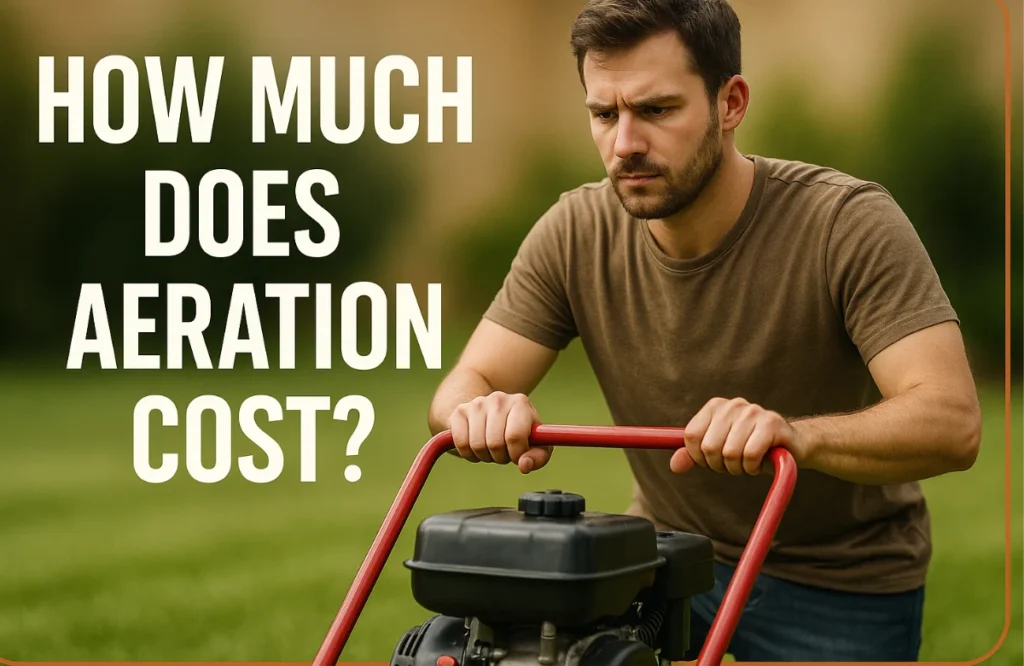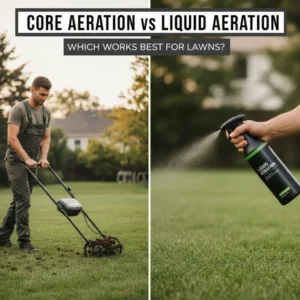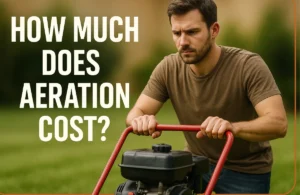Aerating your lawn is the easiest and most effective way to have a beautiful, lush lawn. Soil can become compacted over time from foot traffic, rain and so forth. This encourages deep roots, which is an advantage when there are dry conditions because water reaches the root system better. We will walk you through the process that your lawn goes through via aerating in this article.
What Is Lawn Aeration and Why Does It Matter?
Lawn aeration is an important lawn-care practice of perforating the soil with small holes or taking plugs out of your lawn. This helps reduce compaction in the soil and will enable air, water and nutrients to reach grassroots more easily. Soil over time can be dense and compacted from foot traffic, weather, and other contributing factors that make it hard for your grass’s roots to get nice and strong.
Why Does Lawn Aeration Matter?
- Aerates soils for better air, water and nutrient penetration
- It has the function of promoting water absorption and reducing runoff
- Enhances fertilizer uptake by grassroots
- Supports deeper, stronger root growth
- Breaks down thatch buildup blocking soil access
- soil organisms thrive
- Results in healthier, greener grass and a stronger turf.
Lawn aeration is an essential part of keeping a healthy, well-maintained lawn. In a nutshell, lawn aeration brings new life to your soil and grass, it is a must for the maintenance of a thriving and sustainable lawn.
Types of Lawn Aerators and How They Work
| Type | How It Works | Best For |
| Core (Plug) | Removes soil plugs | Clay or compacted soils |
| Spike | Punctures soil | Sandy or loose soils |
| Manual | Hand-operated | Small lawns, low budget |
| Powered | Motor-driven | Large lawns, professional use |
How to Aerate Your Lawn Properly
The secret to a lush, green lawn is proper aeration! Here is a comprehensive step-by-step guide to aerating your lawn correctly for optimal benefits for the health of your grass and the soil.
Water Your Lawn
Start by watering your lawn well one or two days before aerating. This helps loosen the soil, so that the aerator can perforate and make proper holes. Do not aerate dry, hard soil, the benefits lessen.

Mow Your Grass
Next, mow your lawn just slightly shorter than you normally would, and collect all of the grass clippings. Lowering the height of cut on the grass opens up channels for the aerator to reach down into soil and also ensures clippings won’t get in the way of aeration.
Mark Lawn Obstacles
Determine if there are structures you need to avoid while dancing — whether above ground (trees, overhanging branches, clotheslines) or below (sprinkler heads, underground utilities). This will prevent you from hitting irrigation lanes or wires during aeration.
Choose the Right Aerator
Choose the right aeration tool for your turf. Core aerators, which pull up plugs of soil, are ideal for lawns with severe soil compaction or clay. Spike aerators, that simply puncture the soil without actually removing any plugs, are ideal for looser sandy soils.
Begin Aerating
Begin aerating by running the aerator in straight, overlapping rows across your entire lawn to ensure coverage. Second pass one way for more depth and better results.
Manage Soil Plugs
If you use a core aerator, leave the soil plugs on your lawn – they’ll break down over time and return valuable nutrients to the soil. If the leaves are clumping, cut them with a rake to make them decay more quickly.
Fertilize and Overseed
Once aerated, fertilize to encourage grass growth and deep-root feeding. Re-seeding is advised if you have bald or slowly growing areas to develop solid, lush grass.
Water Again
Last, but not least, be sure to water your lawn well after aerating. This promotes faster decomposition of the soil plugs and aids in recovery for the lawn. Good and steady moisture during aeration promotes nutrient uptake and root development.
Choosing the Best Lawn Aerator for Your Yard
The proper lawn aeration equipment is key to aid in improving your soil and preventing your grass from dying. The best aerator for your lawn will vary according to factors such as soil type, lawn size and budget.
Core Aerators
Core or plug aerators pull out small plugs of soil, loosening compacted soil deep down and providing air and water more opportunities to access the root system. They are best for clay or compacted soil and offer longer lasting benefits. Core aerators can be had as manual devices or powered machines, and they are your best bet for most lawns that require deep aeration.
Spike Aerators
Holes are made by pushing solid spikes into the soil without removing a plug. The best are for sandy or loamed type soils with light compaction. But spike aeration may compact soil further around the holes, and is generally less effective than core aerators on hard ground.
Manual Aerators
Manual aerators Manual devices demand physical exertion and are more for small lawns or spot aeration. They are cheap, but can be low them wide for tilledays laggy seasons laborious over large areas of soil.
Powered Aerators
Power aerators are machines that use motors or engines to aerate a large area of lawn in a short amount of time. They usually have several tines and can easily core aerate your lawn. They are great for large yards or commercial use, but also carry a higher price.
The right aerator choice will determine how well your lawn is able to take advantage of aeration, producing a greener and healthier yard. Keep in mind soil conditions and the size of your lawn when choosing.
When it comes to professional lawn aeration services that are custom designed for your yard’s specific requirements, rely on Revamping Lawn. We offer professional, efficient aeration that makes it easier for your lawn to breathe, take nutrients in and grow thicker and stronger. Call us today to set up an appointment or your lawn transformation and have a green lush yard round the year.
Conclusion
Aerating your lawn is a fast but effective method to enhance the health of your grass and leave it looking better. Aeration opens soil and enables air, water, and nutrients to penetrate into the roots. This results in stronger roots, greener grass and better drought and disease resistance. Frequent aeration breaks down thatch and prevents water from running off.
FAQs
Loose soil from aeration also provides an additional benefit: when those holes are created, air, water and nutrients can easily reach grassroots, resulting in faster growth for your lawn.
The most ideal time is during the growing season, generally early spring or late fall when grass can recover rapidly.
The majority of lawns will require aeration on an annual basis. Lawns with compacted soil or heavy foot traffic may require aeration twice a year.
Core aeration extracts soil plugs and works better for compacted soil, while spike aeration only creates holes in the ground without removing any soil.
Sure, you can aerate small lawns with hand tools, but power is the only way to go for big lawns or seriously compacted ground.
Yes, watering beforehand (to soften the ground) and afterward (to help the lawn recover and absorb nutrients better).



